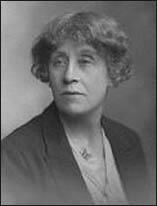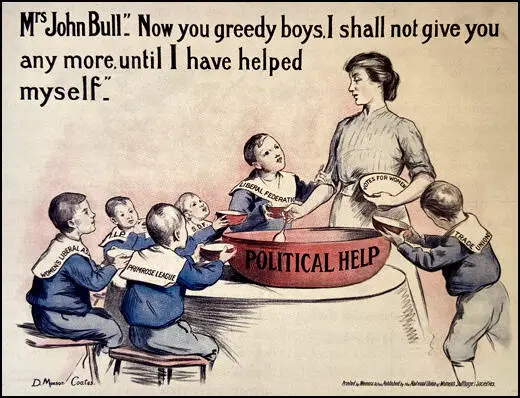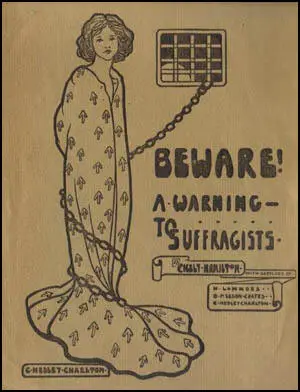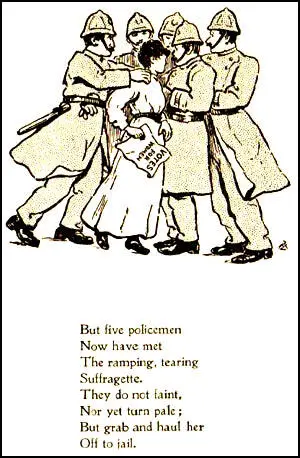Dora Meeson Coates

Dora Meeson, the eldest surviving daughter of John Thomas Meeson, headmaster of Hawthorn Grammar School, and Amelia née Kipling, was born in Melbourne on 7th August 1869. Dora was mainly educated at home until she began her studies at the Christchurch School of Art in New Zealand. (1)
In 1896 studied in London, at the Slade School. A fellow student was Augustus John. (2) She also met the Australian artist, George James Coates, who had won a travelling scholarship to Europe. The couple were engaged in France but could not afford to marry until 23 June 1903, some three years after their move to London. They resolved not to have children but to devote themselves to their artistic careers. "Coates and Meeson established themselves in Chelsea where they became members of an extensive circle of Australian expatriate artists. To earn money they contributed black and white illustrations to Dr H. S. Williams's Historians' History of the World and the Encyclopaedia Britannica." (3)
Dora and George established what became known as the Trafalgar Studios. Dora became friends with Cicely Hamilton who was a member of the Women's Social and Political Union (WSPU), Actresses' Franchise League and the Women Writers Suffrage League. Dora joined the Kensington branch of the WSPU and later wrote: "George and I threw ourselves heart and soul into the suffrage movement".George became a member of the Men's League for Women's Suffrage and walked with me in the processions, which was a great ordeal for him - he hated publicity and crowds." (4)
Artists Suffrage League
In 1907 she was a founder member of the Artists' Suffrage League (ASL). Other members included Emily Harding Andrews, Mary Lowndes and Caroline Watts. (5) In 1908 Coates entered a NUSS poster competition. According to the Women's Franchise newspaper she took first place beating her friend Emily Harding Andrews into joint second place. The judges commented that they found it impossible to decide on which was the better, Miss Williams's design being the more artistic, while Mrs Andrews' would reproduce better". (6)
Dora's poster shows "Mrs John Bull" holding an empty dish labelled "Votes for Women" while six boys - Primrose League, Trade Unions, Liberal Federation, Women's Liberal Association, Social Democratic Federation and Independent Labour Party - clamour for more soup from a large bowl labelled "Political Help". The mother says: "Now you greedy boys I shall not give you any more until I have helped myself." (7)

Dora also painted the 1908 London suffrage march union banner and designing posters and postcards to publicise similar marches. Dora worked with Cicely Hamilton and Mary Lowndes and contributed powerful line drawings to the Artists' Suffrage League publications Beware! A Warning to Suffragists (1909) and A.B.C. of Politics for Women Politicians (1910). (8)

In 1907 some leading members of the Women's Social and Political Union (WSPU) began to question the leadership of Emmeline Pankhurst and Christabel Pankhurst. These women objected to the way that the Pankhursts were making decisions without consulting members. They also felt that a small group of wealthy women like Emmeline Pethick-Lawrence, Clare Mordan and Mary Blathwayt were having too much influence over the organisation. (9)

Eventually, Charlotte Despard, Teresa Billington-Greig, Elizabeth How-Martyn, Dora Marsden, Helena Normanton, Anne Cobden Sanderson, Margaret Nevinson and seventy other members of the WSPU left to form the Women's Freedom League (WFL). Like the WSPU, the WFL was a militant organisation that was willing the break the law. As a result, over 100 of their members were sent to prison after being arrested on demonstrations or refusing to pay taxes. However, members of the WFL was a completely non-violent organisation and opposed the WSPU campaign of vandalism against private and commercial property. The WFL were especially critical of the WSPU arson campaign. (10)
Dora Meeson Coates also joined the WFL and contributed drawings for The Common Cause. This included a cartoon entitled 'Miss Wales: "Do justice to the women, David" it depicts a woman in traditional Welsh costume with hand outstretched towards David Lloyd George who holds papers titled "Bill for the Enfranchisement of Women". It went on to say: "This week, for the first time, we include a cartoon in the number. Wales has been so consistently Liberal for many years that we trust the Welsh to back the Chancellor in supporting women's claims, when once they understand that the interruption of meetings from whence he has suffered is not the policy of any but a very small section of Suffragists." (11) The image was repeated as the cover of the newspaper the following year with a new caption: "I am ready, David. I have helped you. When are you going to help me?" (12)
Suffrage Atelier
In 1912 Dora Meeson Coates became active in the Suffrage Atelier. The Suffrage Atelier functioned as an educational and social centre with a regular programme of activities that mixed instruction, criticism, designing, printing, banner-making and life drawing with exhibitions and guest speakers. It solicited contributions and offered prizes for successful designs. (13) In doing so it tried to reconcile two aims at the same time: to be of use to suffrage societies in the campaign, but also to afford women artists "opportunities to experiment and... to become acquainted with the processes of reproduction." (14)
Leading members would take it in turns holding "At Home" sessions on the last Thursday in every month. Coates held several meetings at Glebe Studios, 55 Glebe Place, King's Road, Chelsea. (15) The Vote reported: "A very pleasant and well-attended function was the 'At Home' of the Suffrage Atelier held at the Chelsea Studios by kind invitation of Mrs. Messon Coates. A large number of Suffragists of all shades gathered to press forward the poster and pictorial campaign which the organisation has so successfully carried on for a considerable time, greatly to the advantage of all other societies, who benefit by this form of advertisement and illustration." (16)
According to Myra Scott: "An ardent feminist who sought financial independence, Meeson became the principal breadwinner by painting a broad range of popular subjects for the market, including sentimental topics, studies of children, tourist souvenirs and rural scenes. In her Thames River paintings, e.g. The Thames at Chelsea (1916), she attempted to break down the social barriers that limited women artists to domestic subjects by appropriating subject matter usually the preserve of male artists – marine painting – and her pictures show scenes of the smog-laden industrial waterfront where women's presence was normally considered unacceptable. Mindful of East End poverty, she also recorded the vulnerability of working men to storms and accident. A group of 'social conscience' paintings aimed to draw attention to official discrimination against underprivileged women, women war-workers and women artists." (17)
Post 1914
On the outbreak of the First World War she became aware of the serious deprivations undergone by many women left behind on the British homefront and supported the Headmistresses' Association suggestion that a female police force should be formed to control the behaviour of young women. As a result, over 2,000 Women's Patrols were formed and every night would tour public parks and visit cinemas in an attempt to prevent acts of immorality. (18)
Dora Coates was a close friend of Charles Corbett, the Liberal Party MP, for East Grinstead and his wife, Marie Corbett. For many years Charles and Marie and their two daughters, Margery Corbett Ashby and Cicely Corbett-Fisher, made public speeches on the subject of women's rights in East Grinstead High Street. Charles was a member of the Men's League for Women's Suffrage and the women were active in the National Union of Women Suffrage Societies. In 1920, with other former members of the Artists Suffrage League, she painted a frieze showing women's work in wartime in the hall of Danecourt at Danehill. (19)
George James Coates died suddenly in London of a stroke on 27 July 1930. A memorial exhibition of his work was opened in May 1931 at the New Burlington Galleries by Lord Birdwood. His wife continued an active artistic career until her death in London on 24 March 1955. The two were buried together in Rye cemetery. (20)
Primary Sources
(1) Myra Scott, Dora Meeson Coates (1995)
Dora Meeson Coates, painter, cartoonist, illustrator and craftworker, was born in Melbourne on 7 August 1869, the eldest surviving daughter of John Thomas Meeson, headmaster of Hawthorn Grammar School, and Amelia née Kipling. The Meeson family was constantly on the move between 1876 and 1896, living in London, New Zealand and Melbourne, and Dora was mainly educated at home. In the late 1880s she drew four crude watercolours over two pages of Australian Aborigines (NLA). One page shows three Aborigines wearing cloaks in their wirly (top) and two Aboorigines fishing from a bark canoe (bottom); the other depicts a large group of Aborigines in the bush (top) and three portrait busts (bottom). All seem to have been copied from photographs.
Dora studied at the Christchurch School of Art (NZ), then at the National Gallery School, Melbourne, where an unconfirmed story states that she was outright or equal first in the 1896 National Gallery Travelling Scholarship competition but withdrew in favour of George Coates , her future husband. She studied intermittently at London's Slade School of Art in 1896-98 then in Paris at the Académie Julian in 1898-99. In 1898 her Portrait of M'selle M… was hung at the Old Salon and she became secretly engaged to Coates. In 1900 the Meeson family returned to London. Dora married George there three years later.
An ardent feminist who sought financial independence, Meeson became the principal breadwinner by painting a broad range of popular subjects for the market, including sentimental topics, studies of children, tourist souvenirs and rural scenes. In her Thames River paintings, e.g. The Thames at Chelsea (1916), she attempted to break down the social barriers that limited women artists to domestic subjects by appropriating subject matter usually the preserve of male artists – marine painting – and her pictures show scenes of the smog-laden industrial waterfront where women's presence was normally considered unacceptable. Mindful of East End poverty, she also recorded the vulnerability of working men to storms and accident. A group of 'social conscience' paintings aimed to draw attention to official discrimination against underprivileged women, women war-workers and women artists.
(2) Ben Uri Research Unit, Dora Meeson Coates (2022)
Painter Dora Meeson was born in Hawthorn, Melbourne, Australia in 1869, the daughter of John Thomas Meeson, then a schoolmaster, later a barrister, and his wife Amelia (née Kipling). She grew up in New Zealand, then attended the National Gallery School in Melbourne, Australia in 1895, also studying intermittently in London at the Slade School of Fine Art, under Henry Tonks, between 1896 and 1898, and then in Paris at the Académie Julian from 1898-99. During her time in France, she became engaged to fellow Australian artist George James Coates (1869–1930), and they moved to England in 1900, but could not afford to marry until some three years later in June 1903. The couple settled in Ealing, west London, for several years, before moving to Chelsea, to be nearer to the centre of the art world. Here they joined an extensive circle of Australian expatriate artists including Tom Roberts, George Lambert, Ruby Lindsay, Bess Norris and Ola Cohn and their studio, at 52 and 55 Glebe Place, became a hub for social and political functions including large parties and private views of their work.
In 1907 Meeson subscribed to the Women's Social and Political Union and, through the suffrage movement, befriended Mary Lowndes and Christiana Herringham, co-founder of the Society of Painters in Tempera. Meeson later became a member of the Artists' Suffrage League and a socialist and joined the Women's Freedom League as soon as it was formed. In 1907 she won a poster competition organised by the National Union of Women's Suffrage Societies and the Artists' Suffrage League, subsequently painting the 1908 London suffrage march union banner and designing posters and postcards to publicise similar marches. In 1909 she contributed powerful (and now very scarce) line drawings to the Artists' Suffrage League publications Beware! A Warning to Suffragists and A.B.C. of Politics for Women Politicians. To earn money, Meeson and her husband contributed black and white illustrations to Dr. H. S. Williams's Historians' History of the World and the Encyclopaedia Britannica. Aware that their exclusion from the Chelsea Arts Club prevented women from accessing competitive professional commissions, Meeson undertook such commissions whenever she could, and forced the inclusion of women artists in the competition to decorate Chelsea Town Hall in 1912. She fought actively against the pervasive prejudice that if women were to paint, then they should restrict themselves to demure subjects befitting their domestic experience, choosing instead to depict labouring and shipping scenes on the River Thames; a political act, in which she laid claim to subjects traditionally reserved for men. This included going out on a boat in all weathers and battling against storm clouds and prevailing winds in order to paint active views of the river at firsthand, rather than settling for a 'tame' view from the riverbank (several of these drawings were acquired after 1945 by the Port of London Authority)....
She became a founding member of the Women's Freedom League (Kensington Branch), a member of the Women's Council of the Conservative and Unionist Women's Franchise Association, and a member of the Artists' Suffrage League. For the last she illustrated booklets, designed political posters and postcards and painted the Commonwealth of Australia's Suffrage Banner, "Trust the Women Mother As I Have Done" (oil paint on green hessian), which was made for and carried at the head of the ANZWVC Contingent in the Women's Suffrage Coronation Procession on 17 June 1911 – the biggest procession of all.
(3) Richard Haese, Australian Dictionary of Biography (1981)
George James Coates... studied art under W. Dellit at the North Melbourne School of Design before attending evening drawing classes under F. McCubbin at the National Gallery School. In 1895-96 Coates studied painting under L. Bernard Hall, acquiring both respect for the painter's craft and the approach of the Munich School - qualities that formed the basis for his later development. He won a travelling scholarship in 1896 and went to London next year before moving to Paris, where he worked at the Académie Julian and studied under Jean Paul Laurens. In Paris Coates renewed an acquaintance with a fellow art student, Dora Meeson (1869-1955), who arrived in 1898. She was born on 7 August 1869 at Hawthorn, Melbourne, daughter of John Thomas Meeson, schoolmaster, later barrister, and his wife Amelia, née Kipling, and grew up in New Zealand. A student at the Melbourne National Gallery School, and later the Slade School, London, Dora studied in Paris under Benjamin Constant and Laurens. The couple were engaged in France but could not afford to marry until 23 June 1903, some three years after their move to London. They resolved not to have children but to devote themselves to their artistic careers.
Coates and Meeson established themselves in Chelsea where they became members of an extensive circle of Australian expatriate artists. To earn money they contributed black and white illustrations to Dr H. S. Williams's Historians' History of the World and the Encyclopaedia Britannica....
Coates died suddenly in London of a stroke on 27 July 1930. A memorial exhibition of his work was opened in May 1931 at the New Burlington Galleries by Lord Birdwood. His wife continued an active artistic career until her death in London on 24 March 1955. The two were buried together in Rye cemetery.
(4) Elizabeth Crawford, Art and Suffrage: A Biographical Dictionary of Suffrage Artists (2018)
Between 1896 and 1898 Dora studied in London, at the Slade School. In 1903 she married an Australian artist, George Coates, and they lived in Chelsea in the studio whose previous tenant had been Augustus John, with whom Dora had been a fellow pupil at the Slade. Dora described the Trafalgar Studios as "a nest of busy workers" and it was here that by chance she met Mary Sargant Florence on an evening when the latter was looking for a suffrage meeting being held in a neighbouring studio. This was probably the one belonging to Florence Haig, an artist and militant member of the Women's Social and Political Union, who became one of Dora's close friends... It was in Florence's studio, at a suffrage meeting at which Mrs Pankhurst was the principal speaker that Dora first met Cicely Hamilton, with whom she would later work on two ASL publications.
As Dora wrote: "George and I threw ourselves heart and soul into the suffrage movement and in 1907 she was a founder member of the Artist's Suffrage League. Working with Mary Lowndes in the ASL she met Christiana Herringham, the founder of the Tempera Society, Annie Swynnerton, and Emily Ford, with whom for a time she shared a studio. She wrote that she avoided doing anything really militant because her husband would have upset if she had gone to prison.
(5) Votes for Women (11th October 1912)
Suffrage Atelier: Mrs Meeson Coates will be At Home at Glebe Studios, 55 Glebe Place, King's Road, Chelsea, on Tuesday, October 15, from 3.30 p.m. There will be an exhibition of posters and other pictorial work. Mrs Louise Fagan has kindly consented to speak.
(6) The Vote (26th October 1912)
A very pleasant and well-attended function was the "At Home" of the Suffrage Atelier held at the Chelsea Studios by kind invitation of Mrs. Messon Coates. A large number of Suffragists of all shades gathered to press forward the poster and pictorial campaign which the organisation has so successfully carried on for a considerable time, greatly to the advantage of all other societies, who benefit by this form of advertisement and illustration.
Mrs. Fagan, addressing the gathering, made an appeal for money to pay a secretary and a traveller. She felt that the worst sweated labour she knew of was involved in the production of these posters. A traveller was wanted, a woman with charming manners and a determined effort to visit branches of all Suffrage societies, her idea being that every branch of every society should have at least one poster on hoarding near their shop, or even their private address, of meetings, at a cost of £2 per year.

